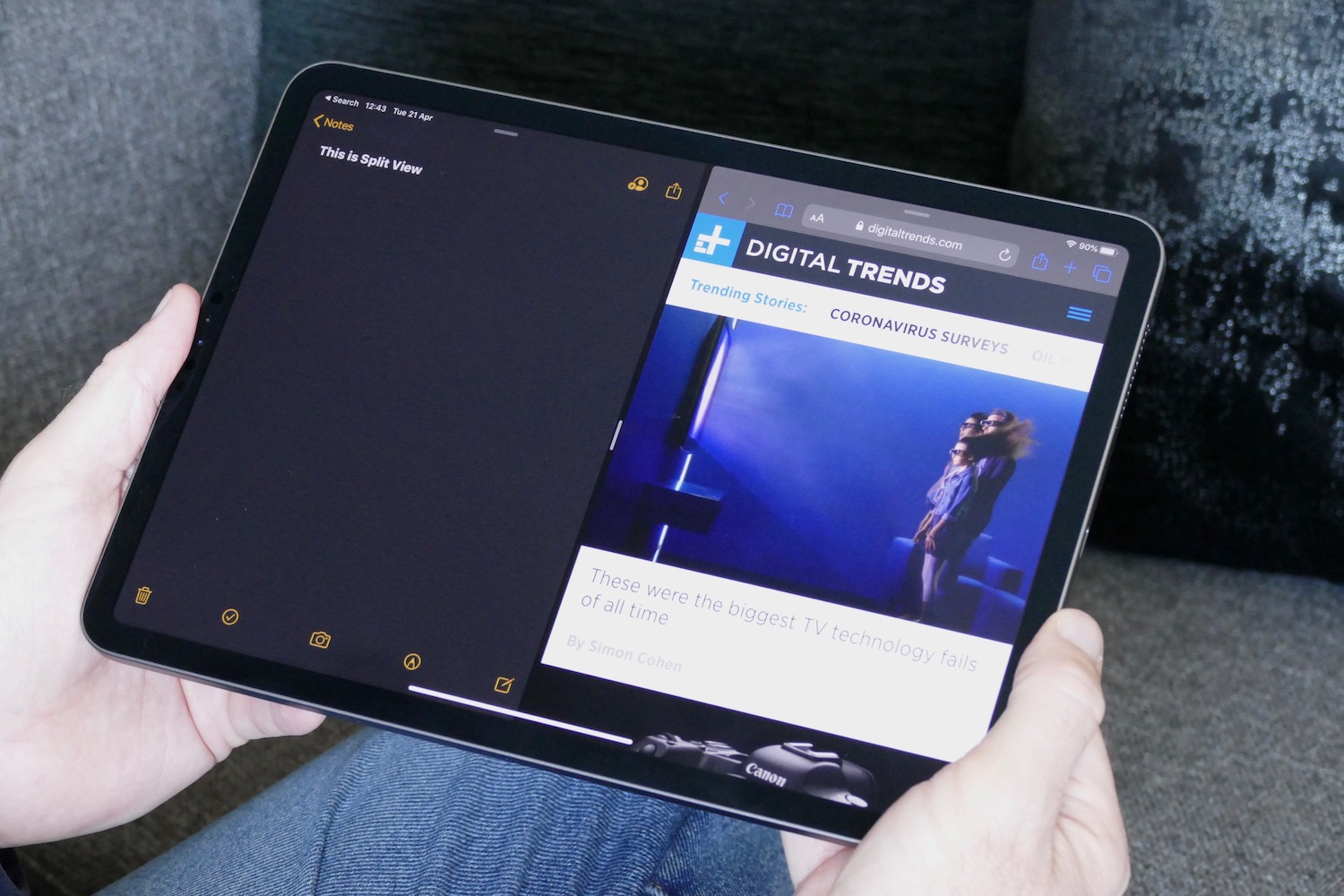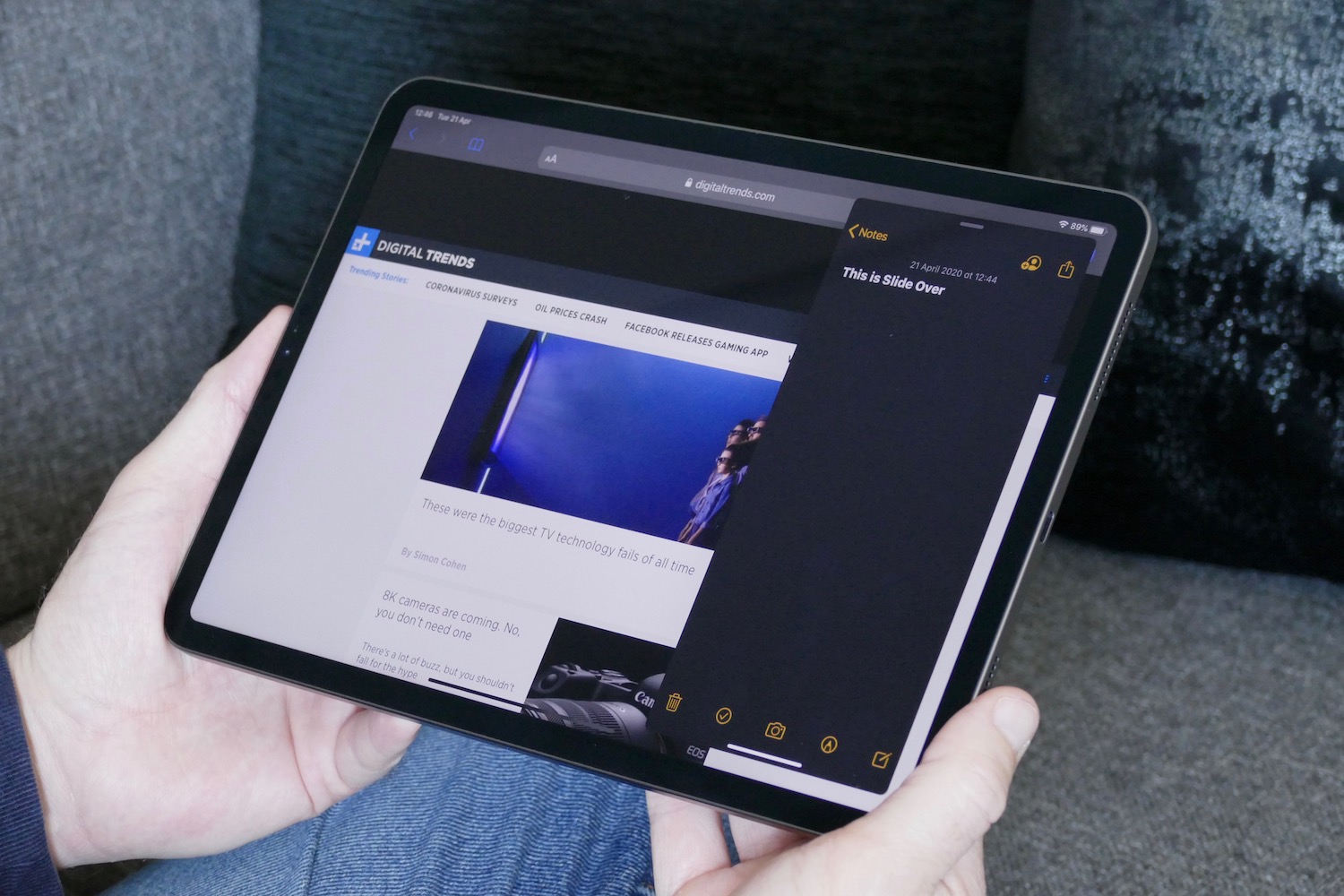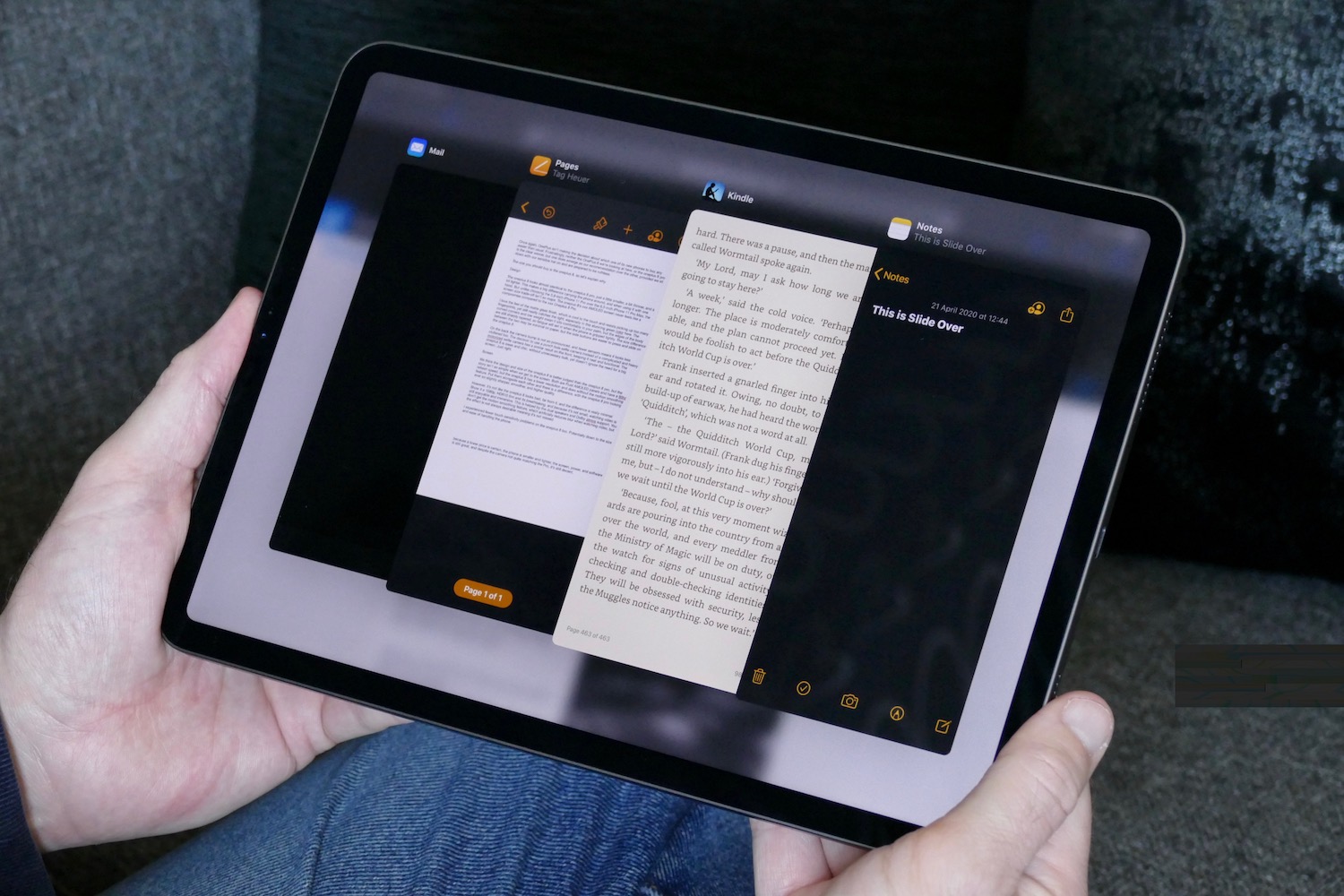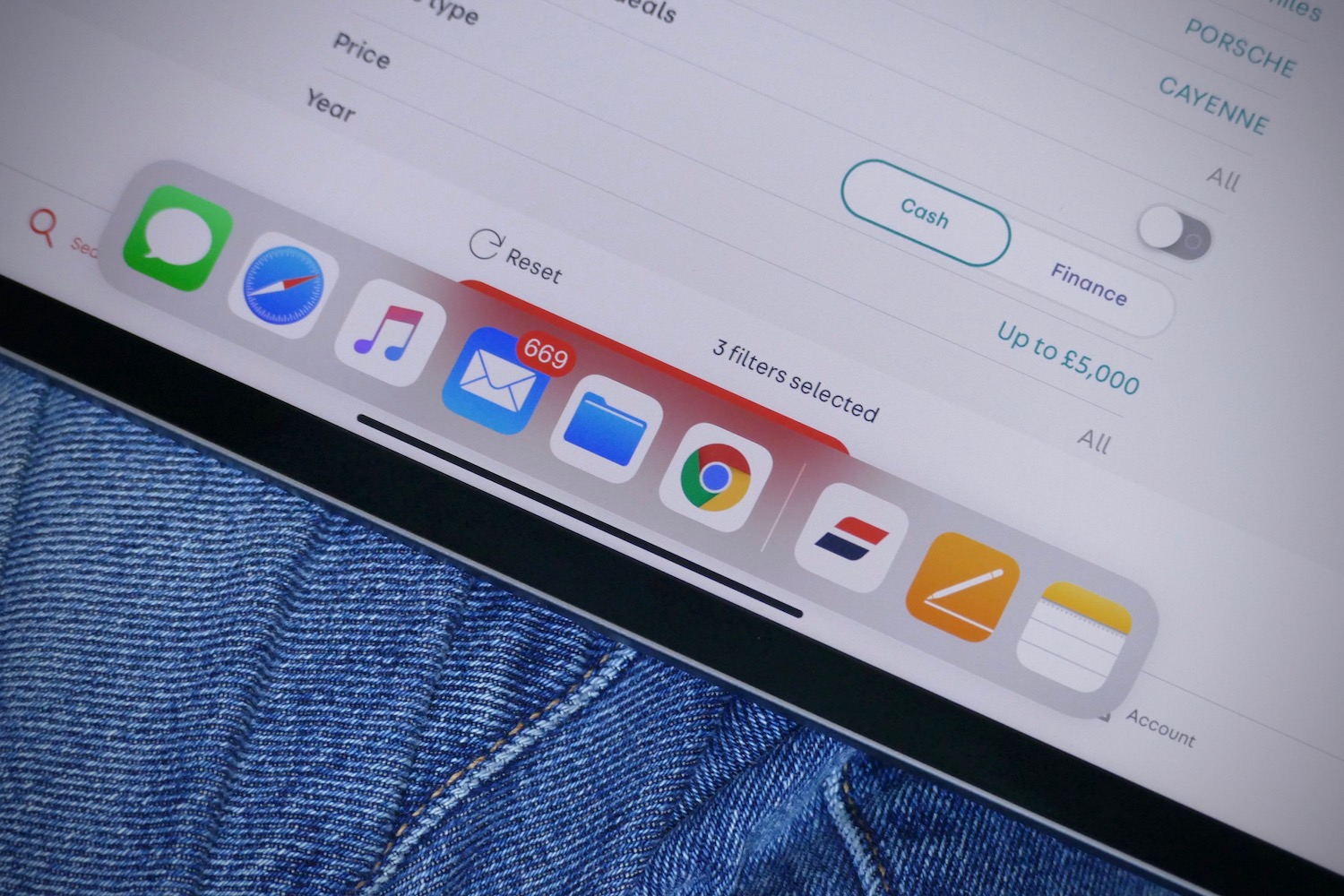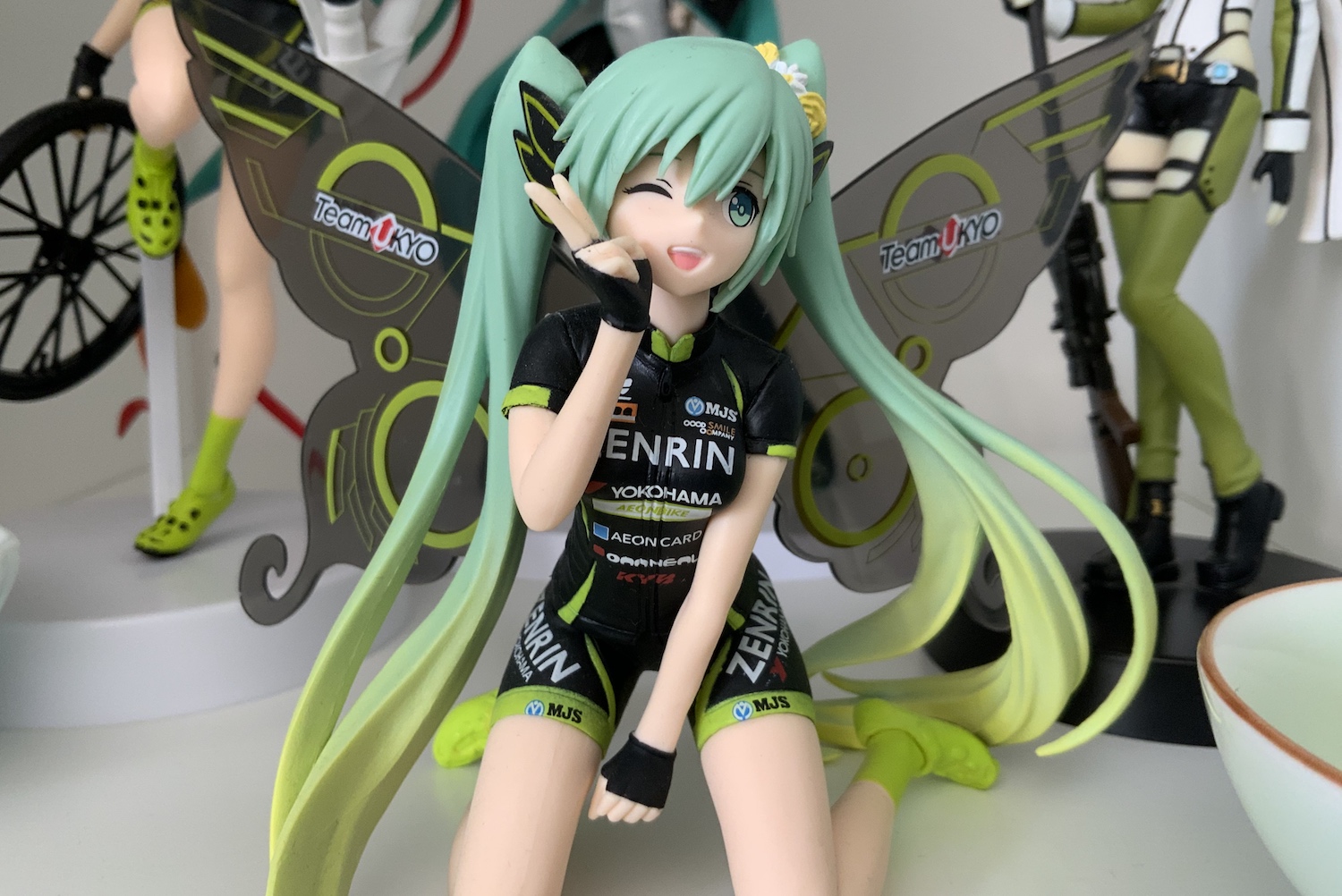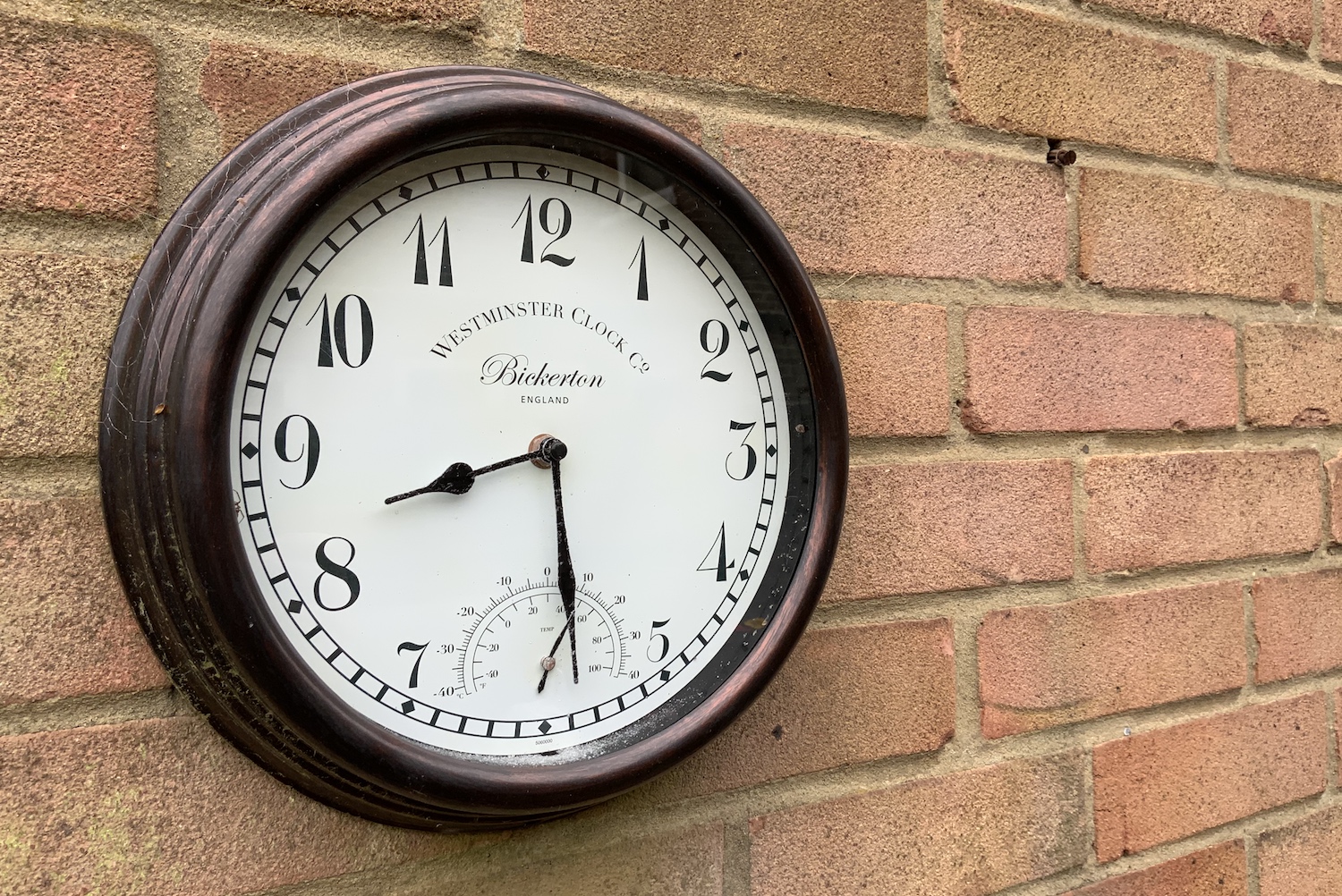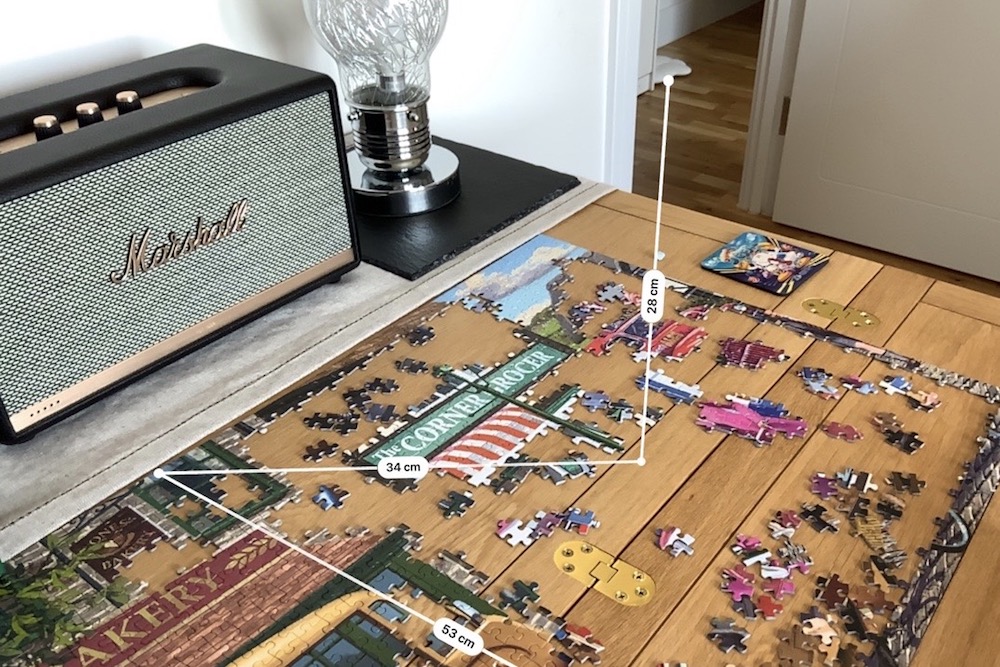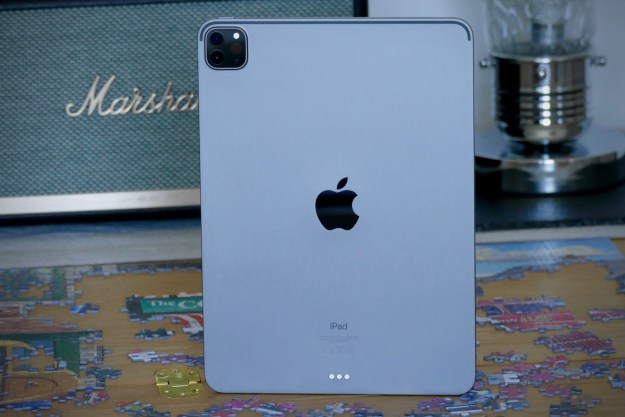
“The iPad Pro 2020 is the best version of the best tablet you can buy, and won't be fazed by any task you throw at it”
- Amazing screen
- Versatile, easy to use software
- Packed app store with tablet-specific apps
- Neat, comfortable, lightweight design
- Great performance
- Perfect for work or play
- Important accessories increase the cost
- Lidar sensor provides no benefit at the moment
- Expensive vs. competitors
The Apple iPad is the most popular tablet in the world, and the one we would recommend to anyone shopping for a new tablet. There’s now a brand new version of the top iPad Pro for 2020, but does that mean it’s the one you should buy?
Well, yes. Of course. The iPad Pro has ruled the tablet market since its introduction. The 2020 iPad Pro is a minor update, but it’s still leagues ahead of its competitors.
Design
I acquired the 11-inch iPad Pro for review. The only difference between it and the 12.9-inch version is screen size. Even the pixel density is the same across both models, at 265 pixels-per-inch. Quite simply, one is bigger than the other, and you must decide which suits your needs best. The larger model will probably be better for artists and anyone seriously intending to work using the iPad, but it may also feel a little too big for watching video in bed or general use around the home, which I have found works better on the 11-inch version.

The tablet is super-slim at 5.9mm and light at 471 grams, and I never felt fatigue from propping it up or resting it on my lap. The weight and dimensions are exactly the same as the 2018 iPad Pro, and the overall design is similar as well. The back of the tablet is flat, as are the sides, punctuated only by perforations for the quad speakers, the USB Type-C charging port, and three buttons. It’s all very industrial, especially in space gray. It can’t be described as beautiful, but there’s no doubt that plenty of thought has gone into getting it just right.
For example, you’d think the flat edges would feel sharp after a while. They don’t. The ever-so-slightly chamfered edge ensures it’s comfortable, and the curved corners fit snugly in your palm, meaning you can hold the iPad Pro for hours without it digging into your hands. The matte finish metal body has plenty of grip and does not attract many fingerprints, something that does blight the screen, which gets in a terrible state. The slim 6mm bezels are just the right size to provide somewhere to hold the tablet without accidentally touching the screen.

The dual-lens camera bump on the back separates it from the 2018 model, and brings it closer in style to the iPhone 11. It adds some character to the tablet’s design, doesn’t stick out from the surface too much, and means the camera is more capable here than on any iPad before it. As the selfie camera is very well hidden in the thin screen bezels and the buttons sit almost flush against the sides, feeling for the camera bump is the best way to tell which end was “up.”
One ergonomic issue related to Face Unlock does pop up occasionally. The camera setup is housed inside the slim bezels, and when holding the tablet in landscape, they are easily covered up. It’s not uncommon to accidentally put the tablet into sleep by pressing the button. You may also need to use Face Unlock to make purchases, and you need to readjust your grip so the cameras work. Luckily, there is an onscreen arrow pointing to the camera location. Like the 2018 model, the 2020 iPad Pro sadly does not have a 3.5mm headphone jack.

I haven’t upgraded my iPad since the first-generation iPad Pro 12.9, released in 2015. It’s a tablet I’ve really enjoyed but often found was unwieldy. Swapping to the 11-inch iPad Pro 2020 is like time traveling, as the tiny sacrifice of 1.9-inches of screen real estate is nothing compared to the benefits of the upgrade in design, reduction in weight, and slimmed-down overall footprint. It’s through a comparison like this where you understand just how svelte and usable the new iPad really is, and how far Apple has come with the design in a few short years.
Display
The iPad Pro’s Liquid Retina IPS screen measures 11 inches and has a 2388 x 1668 pixel resolution, Apple’s ProMotion 120Hz technology, True Tone colors, and 600 nits of brightness. The iPad Pro has been the ideal video partner, thanks not only to the wonderfully calibrated screen but also the wealth of media apps available.

Although the iPad Pro doesn’t show 4K video, the higher-than-1080p quality is utterly wonderful. Colors are perfectly tuned — vibrant, bright, and dynamic in equal measure but never over the top or too saturated. Obviously, quality varies with the video content itself, but provided it was competently filmed, it looks excellent.
The Grand Tour on Amazon Prime looked typically stunning — crisp, sharp, and packed with detail. Watching Wheeler Dealers through the Dplay app isn’t quite so beautiful, but not through fault of the iPad. However, this doesn’t make it any less enjoyable. Unlike a folding smartphone like the Samsung Galaxy Fold or Huawei Mate Xs, the 4:3 screen aspect ratio lends itself better to watching video, as the black bars are minimized. I’ve preferred watching video on the 11-inch iPad Pro than my older 12.9-inch iPad Pro. It’s just more manageable, without compromising on screen size.

One of the most striking aspects is the ProMotion 120Hz screen. If you’re like me and coming from a first-generation iPad Pro, or any other tablet without a high refresh rate screen, it’s astonishing to look at. There’s no blur at all, and this makes everything from swiping through menus to browsing the web and playing games more pleasurable to look at. It’s a wonderful addition to this stunning screen.
Downsides? It’s a shame the screen gets rather greasy and even using special wipes doesn’t clean it up very effectively. Also, unless you buy a case or stand for the tablet, you will have to hold it or prop it up against things to watch video for longer periods of time. Video file compatibility can also be spotty, especially when running them from external drives. Otherwise, it’s faultless.
Software and productivity
The iPad Pro 2020 comes with iPadOS 13.4 installed. This brings various enhancements to iOS 13 that were released at the end of 2019 and first brought the tablet closer to becoming a laptop alternative. Under normal use, it feels just like the iOS on which it’s based, just better-suited to the larger screen with the slide-up Dock menu and other tweaks. Multitasking has been greatly improved, and there are now two ways to use more than one app.
Both are easy to use and logical to set up. The first is Split View, where two apps, or in some cases two views of the same app, appear on the screen at one time. Once you learn the swipe and tap combo to make it work, its simple, but it’s a shame that not all apps work with it. You can’t open a browser window next to Autotrader, for example. Plus, if you’re too quick with the swipe to bring in the Dock, it’s easy to exit the app instead.
Slide Over cures the problem of not all apps working with Split View, and instead floats other app windows over a main fullscreen app. It’s helpful because you can have many windows open at the same time and then use the Exposé view to swap between them. This is very helpful. I found using Pages to write an article, with a browser window open at the same time for research, sped up my workflow.
The new software also introduces USB device management. The iPad has a single USB Type-C connector into which I plugged a hub to provide USB Type-A sockets and an SD card reader. It operated without a problem, read and played compatible video files from a thumb drive, and imported images and video from an SD card. However, I did find the hub — a multiport model from Vava — did pull a lot of power from the tablet, so be aware that leaving it in to work or play video will drain the battery faster.
When working, I like typing on the iPad’s glass screen. It’s sized correctly, so I can still rapidly touch type, and the software’s auto-correction steps in when I make mistakes. I use Pages anyway, and the fast sharing between the tablet and my Mac is very helpful. At the time of writing, I have not tried the new Magic Keyboard with the trackpad, which promises to really improve productivity. Without a case, the iPad Pro must be rested on your lap to type, which isn’t the most ergonomic solution. If you intend to use the iPad in this way, invest in a case or stand that angles the tablet toward you.

What else? Having widgets on the home screen is nice, rather than swiping in the view from the left as is required on the iPhone. This leads to a superb Apple News experience on the iPad. Again, the 11-inch model is better-suited to reading in bed than the 12.9-inch tablet, just because of the footprint. Books and comics are also great to read on the tablet. I could go on and on about iPadOS 13.5, and all the things I like about using the iPad Pro 2020. It’s fast and simple to use, animations are slick without being intrusive, and the app store is packed with tablet-optimized apps.
The iPad Pro 2020 without a keyboard case is a fabulous all-rounder, capable of playing beautiful video one minute, and being suitable for some fast emails and basic work tasks the next, with the chance to read or play games later on. To seriously use it for work, you’ll need a keyboard, but even without it, the pick-up-and-use-it-for-anything nature is appealing and convenient, helped by the slick software and that amazing screen.
Performance and gaming
One of the headline changes from the 2018 version is the new Apple A12Z Bionic processor with octa-core graphics, which puts an emphasis on hardcore work tasks including 4K video editing. Apple claims it is faster than most PC laptops. We ran a benchmark test to see how it performed:
- AnTuTu 3D: 717717
The most recent Samsung tablet, the Galaxy S6, doesn’t even come close to matching that score, and it underlines the incredible ability of the new iPad Pro. Perhaps the least enjoyable thing for me about iPad is gaming is that its a pain to hold the tablet compared to a phone or a console controller. How this will affect you depends on the games you enjoy. Games that rely on swiping, like Asphalt 9 Legends, Minecraft, and Bullet Hell Monday, are better than others. Asphalt 9 looks amazing too, and performance is unquestionably superb.
There’s not a lot else to say, and that’s a testament to the iPad Pro’s flawless performance. It indisputably beats every other tablet, and it’s not even close. If you need a device quicker than an iPad Pro, you need something that’s not a tablet.
Camera
There’s a dual camera on the back of the iPad Pro 2020, and it’s one of the main hardware updates over previous models. The main lens is a 12-megapixel sensor with an f/1.8 aperture, and the other is a 10-megapixel wide-angle lens. You get the Smart HDR feature, 4K video recording at up to 60 frames per second in standard and wide-angle, and five microphones too. In addition, the iPad Pro has a lidar sensor for measuring distances that at the moment has limited functionality. On the front is a 7-megapixel TrueDepth front camera with Face Unlock.

The lidar sensor isn’t much help at the moment. There is no obvious benefit when using the main camera, and Apple doesn’t go into much detail about what you should use it for, outside of the Measure app. This lets you quickly measure items in the real world using the camera on the iPad. It’s fast to recognize basic shapes and items, and I love the way you can see more detailed measurement data the closer you move the camera. However, I’m not sure how often I’d use it.
The camera is acceptable enough for a tablet, and will take decent photos, but can’t match the iPhone 11 Pro or similarly high-performance Android camera phones. The color balance is pleasant, with blue skies appearing natural, good definition in overcast conditions, and strong detail in close-up pictures. I did feel the tablet is too large to use as a camera regularly. As many tablets don’t leave the house, the iPad Pro’s camera is perfectly acceptable, especially the video camera for capturing quick shots of your kids or pets. However, don’t get too excited about the wide-angle camera, as the field of view is tighter than that on the iPhone 11 Pro, and only a little different from the main lens.
Battery
The battery inside the iPad Pro lasted about five days with moderate daily use of about two hours. Charging with the included 18-watt charger took one hour to reach 47%, and reached 100% in around two-and-a-half hours. Using Apple’s 29W fast charger, which must be purchased as an extra, the battery reached 68% in an hour, and then took another hour to reach 100%.

How quickly the battery drains depends entirely on what you do. Video, naturally, takes plenty of power, with two and a half hours taking at least 35% of the battery’s energy. This equates to around seven to seven-and-a-half hours of total video viewing, which is below Apple’s quoted 10 hours of video use. Otherwise, two hours of general use each day saw the tablet last for five days before needing a recharge.
Like the last iPad Pro, the charging port is a USB Type-C connector, so the Lightning cable used for the iPhone won’t work. The included charging cable has a USB Type-C connector at both ends, and not a USB Type-A, potentially limiting the wall charging blocks you can use. This means you may have to carry multiple chargers around with you, or invest in a single new charging block.
Price, warranty, and availability
The iPad Pro we spent time with is the 11-inch version with 128GB of internal storage. It costs $800. If you want the same version with a 12-9-inch screen, it costs $1,000. Choosing more memory increases the price, anywhere up to the maximum of $1,500 for the 1TB, 12.9-inch iPad Pro. If you want a cellular connection, this adds $150 to the overall cost of your new tablet.
Apple provides a basic 1-year warranty against manufacturing and material defects, or you can pay for its AppleCare extended warranty, which also covers accidental damage and the battery, and gives technical support for two years. Prices vary depending on the level of coverage and the product. The iPad Pro 2020 is available through Apple’s own online store and retailers like Best Buy, as well as through carriers with a cellular contract.
Our Take
It’s not often any product fulfills the criteria for being “expensive, but worth it,” but the Apple iPad Pro 2020 does just that. It’s the best version of the best tablet you can buy. If you already own the 2018 version, there is no real need to update to this one, which highlights the fact there isn’t anything drastically new here outside of more power, and the promise of augmented reality features enabled with the lidar sensor in the future.
Is there a better alternative?
Yes, but it depends on how you envision using your iPad over the next couple of years. There’s no question that the iPad Pro 2020 is the best tablet you can buy today because it’s so versatile — but it is expensive, and if you want to have a very similar experience at a lower price, perhaps look around for a 2018 iPad Pro, which can still be found for less money. The basic 10.2-inch iPad costs just $330 and is also great if you don’t expect to do much work.
However, if you want to shift away from a laptop and toward the iPad for work, the extra power will be worth it in the long term. If you want an Android tablet, we are fans of the $650 Samsung Galaxy Tab S6, and the media-focused $400 Galaxy Tab S5e. Although we haven’t tested it out for any length of time yet, the Huawei MatePad Pro 5G impressed during our hands-on time, and certainly has a massive amount of tech inside, including wireless charging and a 5G connection.
Check our favorite tablets of 2020 for more recommendations.
How long will it last?
Replacing your tablet is not something that’s done as regularly as your smartphone. Depending on how often you use your tablet, and what you use it for, anywhere up to five years is about right. If you intend to use the iPad Pro for work, the need to replace it may come sooner depending on your demands. Buying a model with more internal storage will help it last longer.
The iPad Pro 2020 is not water-resistant, and although it has a metal rear cover, the screen is still all glass, making it liable to break if you drop it. As iPad tablets become more productivity-focused, they will spend more time outside, making a case and Apple’s extended warranty wise investments. Apple supplies regular software updates, and the iPad will be supported for several years to come. My original 2015 iPad Pro 12.9 is also running iPadOS 13.4.1, for example.
Should you buy it?
Yes, absolutely. It’s difficult to find a common entertainment or productivity task the iPad Pro 2020 doesn’t do extremely well, but you will have to buy a few accessories to take full advantage of its talents, and there’s little reason for owners of the last generation to upgrade to this one.

